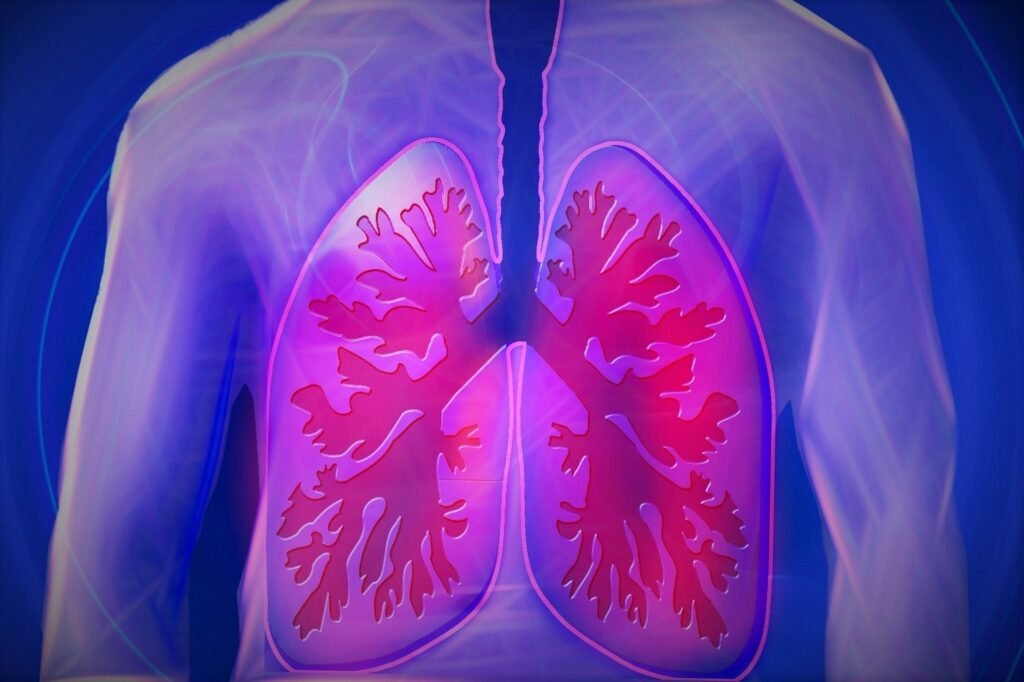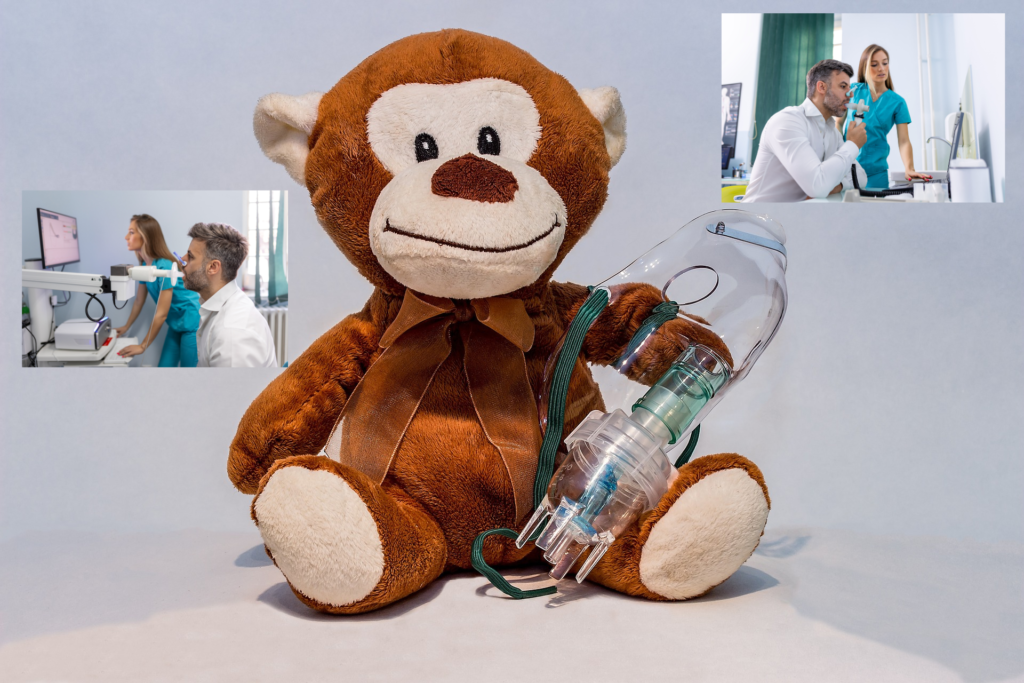lung volume and capacities
Introduction :-

lung volume and capacities – Ventilation is the first part of the breathing process and involves both volume and time. The pressure differential between the alveolar and oral ends of the airways causes ventilation. Normal ventilation for an adult (75 kg) is a respiratory rate of 12 breaths per minute and a tidal volume of 500 ml; for a 1-day-old infant weighing about 25 kg at rest, the normal ventilation is about 6 liters. At a respiratory rate of 33 breaths per minute and a tidal volume of 15 ml, 500 ml per minute, i.e. adults breathe about 100 ml per minute per body weight, whereas infants breathe twice as much as adults.
Lung Volumes :-
Static lung volumes are the volume of air that a person inhales. Each of these volumes represents the volume of air present in the lungs at a particular static condition (a particular position in the chest). There are four types of static lung volumes:
1. Tidal volume
2. Inspiratory reserve volume
3. Expiratory reserve volume
4. Residual volume.
1. Tidal volume :-
TV (or resting tidal volume, RTV) is the volume of air inhaled and exhaled during quiet breathing. Tidal volume represents the normal depth of breathing.
Normal value – 500ml (0.5L).
2. Inspiratory Reserve Volume :-
The air that can be inhaled with a maximal inspiratory effort after a normal inspiration is the reserve volume of inspiratory volume.
Normal value – 2.0 to 3.3 liters.
3. Expiratory Reserve Volume :-
The reserve volume for expiration is the volume of air that can be released following a typical exhale with the greatest amount of effort.
Normal value : 3,300 ml (3.3 liters).
4. Residual Volume :-
RV is the volume of air in the lungs that is left over after a maximal exhale. To empty the lungs, the chest must be opened and the lungs collapsed. The volume of air that enters the alveoli with each breath is equal to the TV minus the dead space volume. Residual volume is important for two reasons:
1. It helps keep the blood aerated during breathing and exhalation
2. Maintains lung volume.
Normal value- 1,200 ml (1.2 liters)
Lungs Capacities :-
1. Inspiratory Capacity
2. Vital Capacity (VC)
3. Functional Residual Capacity
4. Total Lung Capacity
1. Inspiratory Capacity (IC) :-
Inspiratory capacity (IC) is the maximum amount of air that can be inhaled after normal expiration (end of expiration). Included are the inspiratory reserve volume and the tidal volume.
IC = TV + IRV
= 500 + 3,300 = 3,800 ml
2. Vital Capacity (VC) :-
The largest volume of air that may be forcefully expelled following a deep (maximal) inhale is known as vital capacity (VC). VC includes the inspiratory reserve volume, tidal volume, and expiratory reserve volume.
VC = IRV + TV + ER
= 3,300 + 500 + 1,000 = 4,800 ml
3. Functional Residual Capacity (FRC) :-
The quantity of air in the lungs that remains following a typical expiration (a normal tidal breath) is known as functional residual capacity, or FRC. Functional residual capacity includes the expiratory reserve volume and residual volume.
FRC = ERV + RV
= 1,000 + 1,200 = 2,200 ml
4. Total Lung Capacity (TLC) :-
Total lung capacity (TLC) is the volume of air present in the lungs after a deep (maximal) inspiration. All volumes are complete.
Normal value : 6,000 ml
Lung volume and vital capacity measurement:

Spirometry is one technique for determining lung volume and vital capacity. A spirometer is the name of the straightforward device used for this purpose. A respirometer is an enhanced spirometer. Nowadays, plethysmographs are also used to measure lung volume and vital capacity.
1. Spirometer :-
A spirometer has two chambers: an inner chamber and an exterior chamber. It is constructed of metal. The outer chamber is filled with water and is therefore called the water chamber. A floating drum is inverted and submerged in the water. The drum is balanced with a weight. The top of the weight is fastened to the inverted drum using a cord or chain. Attached to the counterweight is an inked pen. The pen is intended to write on paper that has been calibrated and is connected to a recording device. The inner chamber is upside down and has a small hole in the top. A long metal tube runs through the inner chamber from bottom to top. The upper end of this tube extends to the top of the inner chamber. The hose then passes through a hole in the top of the inner chamber and into an outer water chamber that is above the water level. The metal tube has a mouthpiece attached to one end, and a rubber hose is linked to the outer end of the tube. The subject breathes through this mouthpiece by closing their nose with a nose clip. When the subject breathes into the spirometer, the drum rises and the counterweight falls during exhalation. The reverse happens when a person inhales air from the spirometer. During inhalation the counterweight’s movement up and down is recorded in the form of a graph. An upward movement of the curve in the diagram indicates inspiration and a downward movement indicates expiration. The spirometer is used for only one breath. Repetition of this breathing cycle cannot be recorded by this device as carbon dioxide will build up inside the spirometer and no oxygen or fresh air can be supplied to the person.
Minute ventilation:
By definition, RMV can be determined by multiplying tidal volume by the number of breaths per minute, approximately 500 ml x 12 = 6 l/min. Of course, this value can vary widely, and increases significantly during physical activity when both tidal volume and breathing frequency increase. At fast breathing rates, a person cannot normally maintain a tidal volume above about half of their vital capacity.
Variations: Minute ventilation increases under physiological conditions such as spontaneous hyperventilation, physical activity, and emotional states. It decreases in respiratory diseases.
